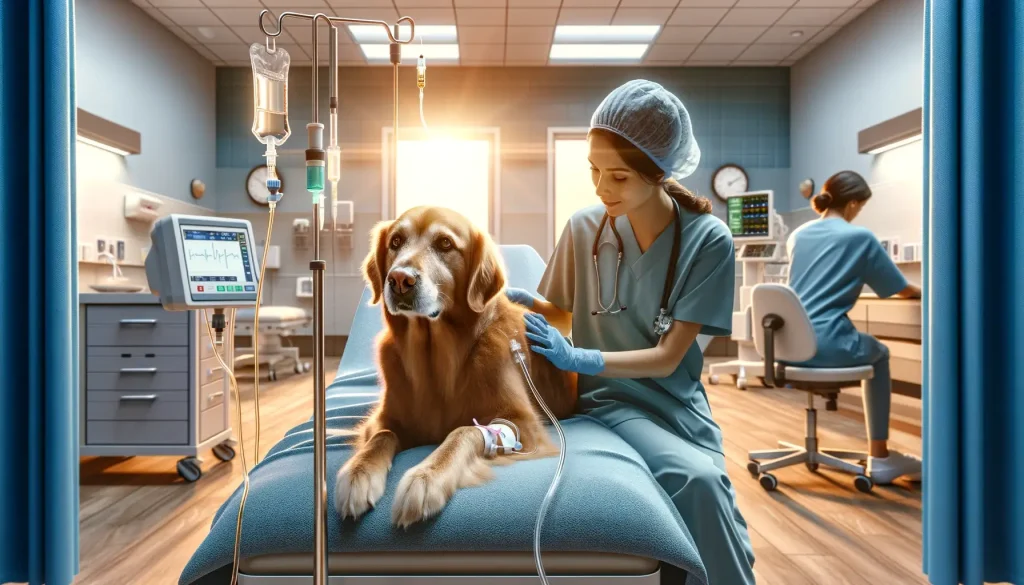
Can Dogs Really Catch Cancer?
Cancer is a word that strikes fear into the hearts of pet owners. While some species seem almost immune to it, others are not so lucky. Understanding how cancer affects different species can unlock clues to its treatment and prevention. Notably, a rare occurrence in nature is transmissible cancer. Dogs, specifically stray dogs, can actually catch cancer, known as canine transmissible venereal tumours (CTVT). This disease, unlike most cancers, doesn’t originate from the dog’s own cells but is passed on through contact, precisely, sexual contact.
Researchers have pinpointed this cancer’s origins back to a single dog that lived around 11,000 years ago. This founder dog’s genetic mutation has persisted through the ages, affecting countless stray dog populations worldwide. Surprisingly, dogs within the Chernobyl exclusion zone appear to be exempt from this disease. With eight different forms of transmissible cancers identified across various species, dog owners and scientists alike are seeking to understand how these diseases work, why they exist, and what can be done about them.
The cases of transmissible cancers across species, including the Tasmanian devil and certain bivalve mollusks, hint at a broader understanding of cancer’s hold over life on Earth. Yet, the fact remains that these cancers, while deadly, provide invaluable insights into how cancers evolve and spread.
Cancer transmission from animals to humans has not been recorded, except in extremely rare cases amongst humans under very specific circumstances. This begs the question, what can the peculiar case of CTVT and other transmissible cancers teach us about fighting cancer more broadly? And how can understanding this help protect our beloved canine friends?
How Cancer Crosses Species Lines
The notion that cancer can be contagious challenges everything we thought we knew about this disease. While humans typically don’t catch cancer from one another, except under rare medical circumstances, the animal kingdom tells a different story. Transmissible cancers have been identified in species ranging from the Tasmanian devil to bivalve mollusks, showcasing a bizarre method of disease propagation.
Genomic research has shed light on why certain creatures face higher risks of transmissible cancers. These findings are crucial for developing treatments that could benefit not just animals but humans as well. The two transmissible cancers decimating Tasmanian devil populations are a prime example. Transmitted through biting, they are not the result of individual mutations but are a singular disease spreading through the population. Yet, there’s hope as scientists note Tasmanian devils’ immune systems are gradually adapting.
Similarly affecting stray dogs worldwide is the canine transmissible venereal tumour (CTVT). Remarkably originating from a single dog some 11,000 years ago, CTVT is primarily spread through sexual contact among dogs. However, dogs in the Chernobyl exclusion zone seem to be resistant to CTVT, raising questions about the environmental factors influencing the spread of these diseases.
Interestingly, the sea also harbors its version of contagious cancer, observed in several bivalve mollusk species. Unlike the Tasmanian devil and dog cancers, marine transmissible cancers have yet to be fully understood in terms of their spread and impact on populations.
While the leap of cancer between animals to humans remains extremely rare, occurring in isolated medical scenarios, the study of transmissible cancers across species offers invaluable insights. Understanding how these cancers evolve, spread, and affect their hosts provides a unique perspective on cancer as a whole, potentially unlocking new avenues in treatment and prevention strategies for all species.

Home Care Tips for Dogs with CTVT
Protecting your pet from canine transmissible venereal tumours (CTVT) starts at home. As a pet owner, there are simple yet effective steps you can take to minimize your dog’s risk of catching this unique form of cancer. Here’s what you can do:
- Keep an eye on interactions: CTVT is sexually transmitted. Limiting your dog’s unsupervised interactions, especially with stray dogs, reduces the risk of CTVT transmission.
- Maintain regular vet check-ups: Early detection is key. Regular visits to the vet can help catch CTVT early, increasing the chances of successful treatment.
- Consider spaying or neutering: This not only helps control the pet population but also reduces the likelihood of your dog contracting CTVT through mating.
- Stay informed: Knowledge is power. Understanding how CTVT spreads and recognizing its symptoms can help you protect your pet better. Look out for signs like tumors in the genital area, bleeding, and difficulty urinating.
- Environment matters: The Chernobyl exclusion zone dogs’ resistance to CTVT suggests environmental factors play a role in cancer transmission. While an urban household is no Chernobyl, keeping your home and your dog’s living area clean and safe from pollutants can contribute to overall health.
While dogs living in highly polluted or contaminated areas like Chernobyl show resilience to CTVT, it’s important to remember the role of genetics and environment in cancer. We may not fully understand why some dogs are more resistant than others, but we can take proactive steps to safeguard our pets.

Knowing When Your Dog Needs a Vet for CTVT
When it comes to canine transmissible venereal tumours (CTVT), early detection and treatment are crucial. But how do you know it’s time to see the vet? Here are some signs and tips on when to seek professional help.
- Unusual lumps or swellings: The most obvious sign of CTVT is the appearance of tumors in the genital area. Any new or growing lump on your dog should prompt a vet visit.
- Bleeding or discharge: If you notice any unusual bleeding or discharge from your dog’s genital area, it’s a red flag for CTVT and requires immediate attention.
- Difficulty urinating: Trouble doing their business, including signs of pain while urinating, can be another symptom of CTVT.
- Changes in behavior: Dogs suffering from discomfort or pain may become less active or show changes in behavior. If your dog seems off, a vet check is a good idea.
While canine transmissible venereal tumours are a serious condition, they are often treatable with early detection. Regular vet check-ups and being alert to changes in your dog’s health are your best defenses against CTVT. Dogs can lead full, healthy lives after treatment, so acting quickly at the first sign of trouble is essential.
Don’t wait for symptoms to worsen. If you suspect your dog is showing signs of CTVT or any other health issue, contacting your vet sooner rather than later is key. With transmissible cancers like CTVT, understanding and vigilance can make all the difference.

Treatments for CTVT
When facing a diagnosis of canine transmissible venereal tumours (CTVT), it’s crucial to know the treatments available. The good news is that CTVT, although serious, can often be successfully treated, giving dogs a chance to recover fully.
Firstly, chemotherapy is the most common method of treating CTVT. This approach has a high success rate, with many dogs showing significant improvement after just a few sessions. The drugs used in chemotherapy target the cancer cells, leading to the tumor shrinking and, in many cases, disappearing entirely.
Surgery may be an option if the tumor is localized and accessible. Removing the cancer surgically can be effective, especially when combined with chemotherapy to handle any remaining cancer cells.
Another promising treatment avenue is immunotherapy. This method, harnessing the dog’s own immune system to fight the cancer, is gaining ground. While it’s more common in human cancer treatment, advancements are being made in veterinary medicine that could see immunotherapy becoming a viable option for dogs with CTVT.
Radiation therapy, though less commonly used for CTVT, offers another potential treatment method. It is particularly useful for tumors that are difficult to remove surgically.
Beyond medical treatments, supportive care is key. This includes ensuring the dog is comfortable, managing pain, and addressing any other health issues. A healthy diet and a stress-free environment contribute to the overall well-being of a dog undergoing cancer treatment.
Researchers and veterinarians are also studying the effects of environmental factors on the treatment and prevention of CTVT. As seen in the dogs living in the Chernobyl exclusion zone, certain conditions might contribute to resistance against transmissible cancers. Understanding these factors could lead to new approaches to prevent and treat CTVT.
With ongoing research and treatment developments, the future for dogs affected by CTVT looks increasingly optimistic. Pet owners, armed with information and support from their veterinarians, can play a crucial role in fighting this unique form of cancer.
Beginner Guide to Raising Quail at Home
What are the Signs of a Dog Concussion?
What Causes Your Dog’s Ears to Smell Bad?
When your dog’s ears start to emit an unpleasant odor, it might leave you puzzled…
Methimazole Treatment for Cat Hyperthyroidism
Methimazole plays a crucial role in managing feline hyperthyroidism, a condition marked by an overactive…
Got Hummingbirds in your Backyard? Here’s How to Care for Them.
Why Does Your Cat Pee Outside the Litter Box?
Cat’s Litter Box Issues It’s not uncommon for cat owners to face the frustrating dilemma…




